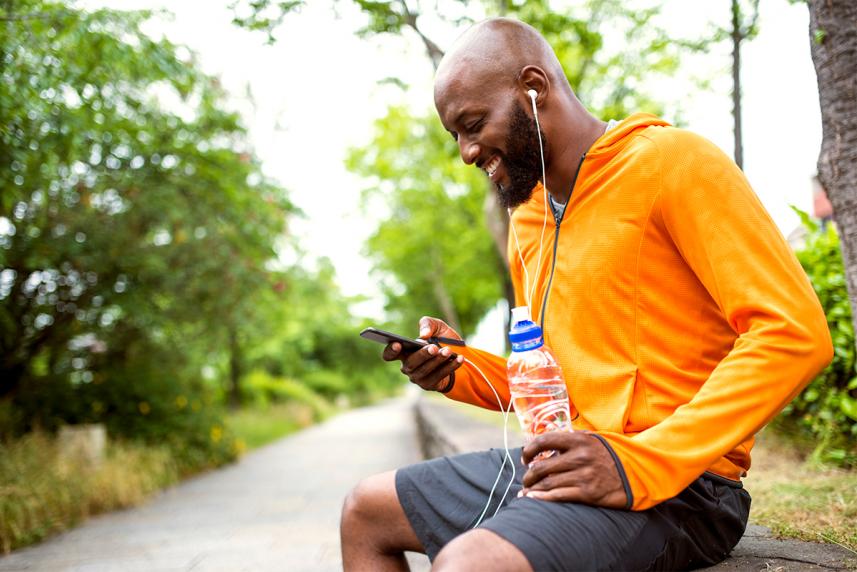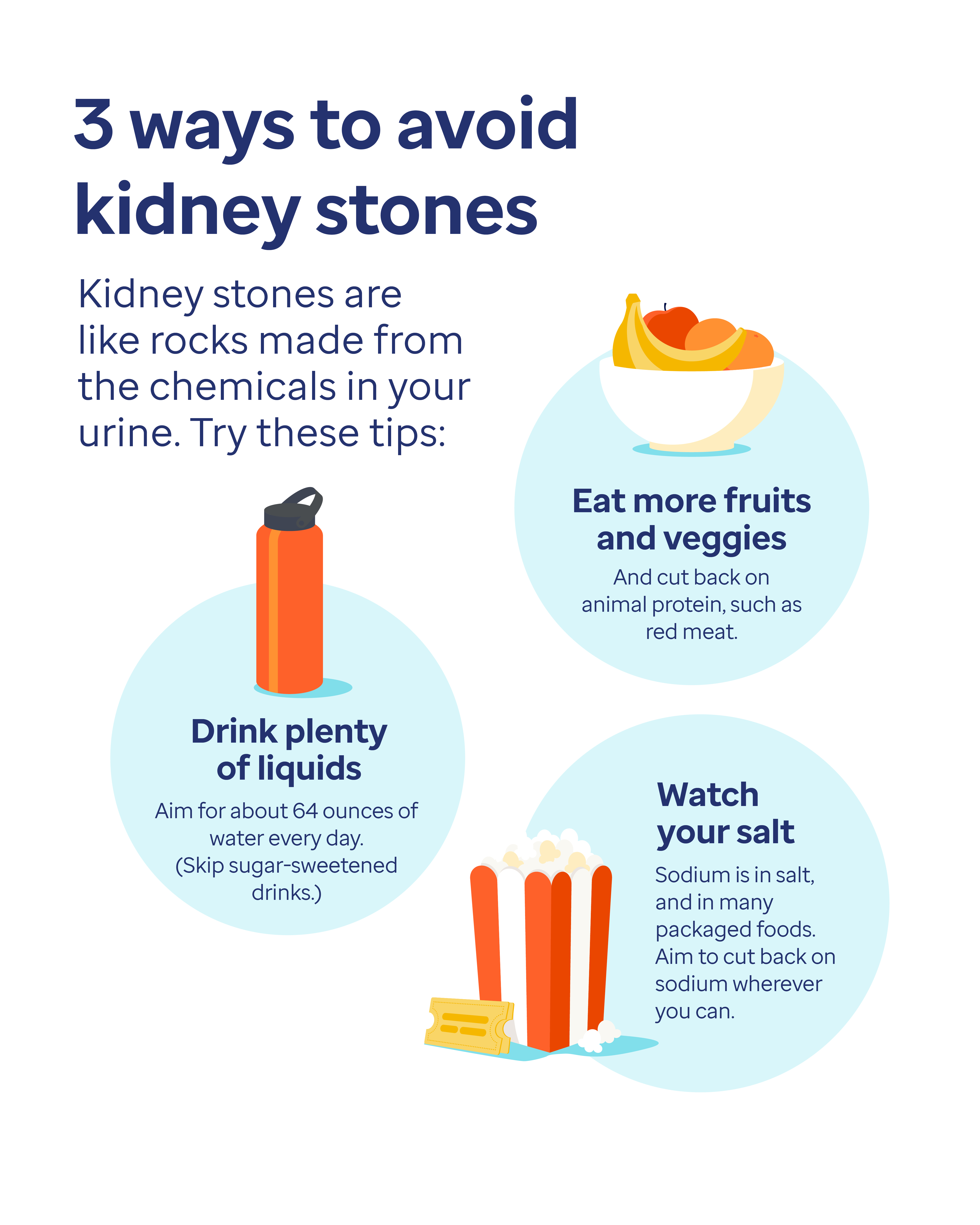
Discover the free and easy way to save at over 64,000 pharmacies with Optum Perks.

Your kidneys are two of your body’s most hardworking organs. In fact, they work so hard, you might not know if they’re starting to struggle. Until now.
You likely don’t give your kidneys much thought. Though you probably know their shape. After all, nearly everybody’s seen a kidney bean or taken a dip in a kidney-shaped pool. But where exactly are your kidneys and what exactly do they do?
Turns out, your kidneys are two amazing powerhouses. They’re tucked right up near your rib cage, on either side of your spine. Each one is about the size of a fist. But together, they’re big-time factories with important work to do, including1:
“Your kidneys are the masters of regulating your body,” says Suzanne Martin, MD. She’s chief of nephrology at Reliant Medical Group, part of Optum in Worcester, Massachusetts. “And the beauty is, they don’t need too much attention, apart from you eating a good, healthy diet. They’re hardworking organs that we’re all happy to take for granted.”
Sometimes, though, things can go wrong. And when they do, you might not even realize it until your kidneys are in big trouble. Your best defense is a good working relationship with your doctor, says Dr. Martin.
“That’s because the symptoms of kidney disease are usually nonexistent at first,” she explains. So your doctor can help you catch little problems before they turn into big ones.
Here’s a look at four common kidney problems and how to spot the signs.
CKD affects 37 million Americans. That’s about 1 in 7 adults. The problem is that about 90% of those people don’t even know they have kidney disease.2
What it is: CKD means your kidneys are having trouble filtering your blood. In the early stages, most people have no symptoms. But as things get worse, waste builds up in your blood and makes you feel sick.
You may develop high blood pressure, anemia, weak bones or damage to your nerves. You may also have a higher risk of heart disease. Unfortunately, the problems can all happen slowly and quietly. And kidney failure can happen without warning. Those symptoms include:
You may need dialysis (a treatment that helps remove toxins from the blood) or a kidney transplant.2
Why it happens: The two leading causes of CKD are diabetes and high blood pressure. For some people, says Dr. Martin, there may be a genetic connection. That means you may be more likely to get it if other family members have it, too. “But it’s chronic disease that most often leads to kidney disease,” she explains.
How it’s treated: Treating your other conditions can help slow CKD and prevent more damage from happening. That means taking your medications and watching your blood sugar and blood pressure.

Discover the free and easy way to save at over 64,000 pharmacies with Optum Perks.
How to lower your risk: Dr. Martin says it’s super important to follow these strategies:
Keep your blood pressure under control.
Manage your blood sugar if you have diabetes.
Stop smoking. “Smoking can damage your blood vessels, which can make CKD worse,” says Dr. Martin.
Have a primary care provider and see them regularly. Patients who have regular care tend to have slower progression, says Dr. Martin. “If you do wind up needing dialysis or a kidney transplant later on, the relationship you have with your kidney specialist will make you much better prepared for this big life change.” (If you're looking for a new doctor, we can help.)
Talk to your doctor about routine blood work to find little problems before they turn big. Some tests your doctor may consider:
Creatinine blood test. This measures how well your kidneys are removing waste material from your blood.
A urine albumin to creatinine ratio (uACR) test. This measures the amount of protein in your urine.2
Kidney stones send more than half a million people to the emergency room every single year.7 It’s considered one of the worst kinds of pain a person can experience.
What it is: A kidney stone is like a rock made from chemicals in your urine. It typically forms inside your kidney, near the ureter. That’s the tube that carries urine from your kidneys into your bladder. The stone either stays in place, or it travels through the ureter to your bladder and out of your body. While that stone is making its trip, it can cause7:
Why it happens: “There are minerals inside your kidneys,” explains Dr. Martin. “Depending on how your kidneys handle those minerals, you may be at risk of getting stones.” For some people, it could be hereditary. Other family members may have had stones, too. For others, other medical problems might cause kidney stones to form. Whatever the reason, the result is always the same: ouch.
How to treat it: If you start noticing symptoms, get in touch with your doctor. Treatment depends on how big the stone is, says Dr. Martin. “You may be able to get medication that will help relax the tubes where the stone will pass. People who have larger stones may need a procedure to break up the stone. Or if the pain is really bad, you may get pain medication.” The key: Talk to your doctor early on.
How to avoid it: If you’ve had stones in the past or have a family history of them, try these tips, advises Dr. Martin:

About 3 to 7 out of every 10,000 people in the United States develop a kidney infection each year.
What it is: Kidney infections are caused when germs make their way into the kidneys. The symptoms include:
If you notice any of these signs, contact your doctor right away.
Why it happens: A kidney infection usually starts when germs from the lower urinary tract (bladder) move up into the kidneys, Dr. Martin explains. Or the germs can come from somewhere else in the body.4
How it’s treated: You’ll need a prescription for antibiotics, says Dr. Martin. More serious infections may require medication that’s delivered through a vein.
How to lower your risk: There’s one simple key, says Dr. Martin. Keep germs out of your urinary tract. By preventing UTIs in the first place, you can keep them from traveling up to your kidneys. Try these tips:
These fluid-filled sacs are usually small, round or oval. And chances are, you won’t know you have one unless you get tested for something else.
What they are: “These are little sacs filled with fluid,” explains Dr. Martin. “They’re really common and completely harmless. If a radiologist tells you that you’ve got a simple cyst, you don’t need to do anything at all. They’re just there.” If you have many cysts and/or a family history of kidney cysts, your doctor may suggest you get checked for polycystic kidney disease (PKD). PKD is a more serious disorder that can affect how your kidneys work.
Why they happen: Medical mystery? Sort of. Doctors aren’t quite sure why people get kidney cysts. But they do know that the older you get, the more common they are. In one large study, nearly 1 in 5 people ages 50 or older had simple kidney cysts.5
How to lower your risk: Because they are harmless, there is no need to prevent simple cysts. If they have a thicker wall or solid material inside them, they are called “complex.” And you might need to have them scanned every now and then. Or if they cause symptoms, like pain or fever, your doctor may use a long, thin needle to drain them.6
SOURCES
© 2024 Optum, Inc. All rights reserved. Do not reproduce, transmit or modify any information or content on this website in any form or by any means without the express written permission of Optum.
The information featured in this site is general in nature. The site provides health information designed to complement your personal health management. It does not provide medical advice or health services and is not meant to replace professional advice or imply coverage of specific clinical services or products. The inclusion of links to other websites does not imply any endorsement of the material on such websites.
Stock photo. Posed by model.